Welcome to this week's Executive Meeting.Glenn Glieber (Owner): "... but is business really coming back? I keep hearing that some folks are up 5% over last year, but so what? Last year was a catastrophe. And then I hear that other folks are 5% down vs. last year, like we are. I'm optimistic for 2010. Of course, back in April, I was optimistic for Fall 2009, so who knows. Maybe I'm running out of optimism. And then I hear that Guilt Groupe will sell something like eighteen trillion in merchandise this year, from $0 a few years ago, so maybe the problem is us, maybe our industry is the problem maybe ..."Meredith Thompson (Chief Merchandising Officer): "Kevin, is that you?"Kevin: "Yup, it's me".Roger Morgan (Chief Operations Officer): "What do you think of integrated marketing campaigns, Kevin?"Kevin: "What do you think of them, Roger?"Roger Morgan: "Aren't we supposed to integrate all of our campaigns? That's what the marketing literature tells us, right? If we don't integrate the catalog and the website and e-mail campaigns and social media and everything else, customers will abandon us. We have to be multichannel, and we have to make sure everything syncs up perfectly."Pepper Morgan (Chief Marketing Officer): "And yet, we don't integrate anything, really, and it doesn't seem to hurt us."Lois Gladstone (Chief Financial Officer): "Or is it the entire reason our business is struggling? We've never integrated anything around here, maybe that's why we're not doing so well."Meredith Thompson: "I'm not always one to defend marketing, but customers buy from us because I do a good job, not because of some mythical integrated marketing campaign. Customers don't buy because our website and e-mail campaigns and Twitter presence all feature our signature olive color, right?"Roger Morgan: "Well now, wait a minute. Neptune Research recently did a study and found that e-mail click through rates were 22% higher if print and e-mail and social media campaigns echoed the same marketing themes. That alone tells us that this stuff works."Lois Gladstone: "Why wouldn't we do a test? Why wouldn't we fully integrate a campaign, like our Thanksgiving Dress Extravaganza on November 9? What would it take to fully integrate a campaign?"Roger Morgan: "It should be easy. What's the e-mail theme for November 9?"Meredith Thompson: "That's a clearance e-mail. We need that one to liquidate merchandise."Roger Morgan: "Let's add a new e-mail campaign on November 10, one that is fully integrated with the Thanksgiving Dress Extravaganza."Pepper Morgan: "Our customers opt-out at high rates if we go from two to three campaigns a week, so we're not going to do that."Lois Gladstone: "Ok. Then maybe we could devote the first eight pages of the Thanksgiving catalog to the campaign."Pepper Morgan: "We already have a dot on the cover of the catalog, and the homepage will reflect the campaign. And we cannot change out the creative of the catalog, that was shot back in July."Lois Gladstone: "Why didn't we coordinate all of this stuff back in June?"Meredith Thompson: "Our Thanksgiving campaign last year was just awful, remember? So we elected to go with a dot on the catalog, but focus creative on what worked two years ago."Roger Morgan: "So this is really a website campaign with a dot on the catalog. There's really no integration to speak of. What kind of message does this send the customer? She gets a catalog with creative from two years ago, a clearance e-mail, and a website that promotes a Thanksgiving Extravaganza. Imagine how confused the customer is? What a terrible customer experience."Meredith Thompson: "Did we ask Candi Layton back into these meetings? Who says that this is a terrible customer experience?"Pepper Morgan: "We pay close attention to this stuff because we are marketers. Quick, everybody, tell me right now what Best Buy did last month? What was their marketing theme? How were their campaigns integrated?"Lois Gladstone: "I have no idea."
Pepper Morgan: "Exactly. Those who demand that everything be integrated are those who are selling solutions that depend upon integration. If we are marketers, and we cannot even remember one single thing about what a behemouth like Best Buy did just last month, then why do we think that our customers are having such a terrible customer experience because we're sending a clearance e-mail on Monday at a time when the website is promoting Thanksgiving?
Lois Gladstone: "But doesn't it make common sense to be more tightly integrated? I think with a little pre-planning and coordination between all of us, everything could be integrated, right?"
Meredith Thompson: "Why is it that Operations and Finance always think they know what the best Marketing and Merchandising strategy is? I mean, so what if e-mail click-through rates are 22% higher in integrated campaigns? Somebody needs to show me that a company, over the course of one or two years, is more profitable because all campaigns are integrated. Until I see that, I'm not signing up for integration. Roger, in everything you have read, all of those case studies, have you found one instance where a company went from 5% pre-tax profit to 10% pre-tax profit only because they perfected this mythological art known as multichannel integration?"
Roger Morgan: "No. But maybe that's because everybody fails so miserably."
Lois Gladstone: "Why, Meredith, are you so against this?"
Pepper Morgan: "I can take that one. The more you integrate a business, the more you squelch innovation and testing and alternative strategies. You integrate campaigns, and you are stuck with a clearance issue. If you integrate campaigns across channels, you ruin the inherent productivity of each campaign. If you integrate campaigns, you have to pre-plan everything a year in advance, so that your least flexible channel, in our case, catalogs, can accommodate integration. And when you do that, you lose the ability to act nimbly in channels like e-mail and paid search and banner ads and social media, because those channels must support the catalog that you planned a year earlier. Maybe that's the problem. Maybe multichannel advocates are clinging to catalog marketing, trying to keep the dream alive, trying to integrate all the upstart channels around the time-honored catalog."
Meredith Thompson: "If you truly pursue an integrated multichannel strategy, you become a slave to the channel that is least able to adapt in a timely manner. At Gliebers Dresses, that channel is the catalog channel. I want to be able to be nimble, to use e-mail and paid search to surgically attack various issues I have. I want to use e-mail to capitalize on the merchandise that is working, or not working, and to not be a slave to a marketing campaign that the former CFO conceived a year earlier that now appears in print."
Roger Morgan: "Kevin, help us, you have to agree with my thesis on multichannel campaigns, right?"
Meredith Thompson: "Impossible, he supports the need to market merchandise in a flexible manner."
Kevin: "I support all of you. Honestly. Multichannel marketing integration is a giant game of whack a mole. On the one hand, you have real-time analytics telling you how to optimize your digital environment at this moment! On the other hand, you have a catalog channel that requires planning six to nine months in advance, and those who have a retail channel face similar long-term planning obstacles. Let me make this very clear. You can never achieve true integration when social media requires real-time decisions, e-mail marketing requires weekly decisions, and cataloging and retailing require six month or greater planning cycles. Any time you try to integrate in one channel, you pound down the mole, only to see a problem arise in another channel."
Meredith Thompson: "Told you, folks!"
Kevin: "No, Meredith. Whack a mole doesn't mean that you don't get hit with the mallet! I think it is the job of the marketing team to have integrated themes, not integrated campaigns. In other words, you support Thanksgiving from November 1 to November 25, let's say. Merchandising, Marketing, Operations, and yes, even Finance work together to make the Thanksgiving season a success. But this means everybody must work together. So Roger, this means all of your call center employees must be 100% behind Thanksgiving, selling it, exciting customers, not acting like drones taking calls. And Lois, this means you have to financially support efforts that are profitable above and beyond the budget, not imposing your will on people to adhere to a budget when people discover profitable strategies at the last minute. You see, multichannel integration has nothing to do with campaigns. Multichannel integration has everything to do with people. And we don't want to talk about getting people, human beings if you will, to work together, so the vendor community uses campaigns as a platform to force integration, forcing us to buy solutions that they offer. And when we do that, all we do is play a big game of whack a mole, always trying to figure out how to put out a fire, never ever achieving perfection. You don't want to achieve perfection via integrated multichannel campaigns. You want to sell dresses profitably. I'd go with integrated themes, and I'd get all employees to be on the same page for each theme."
Glenn Glieber: "Good topic, but again, I don't think we made a single decision that helps us sell a dress in November. I want to challenge every single person in this room to find a 2% solution that helps us increase dress sales by 2% in November. If everybody does this, our business improves by somewhere around 10%. That's what I'm talking about. Now get busy!"
Labels: Fiction, Gliebers Dresses
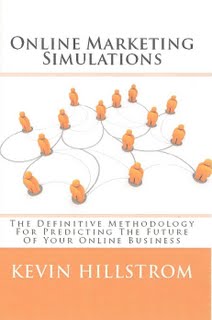
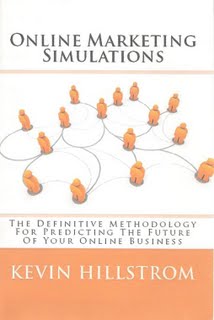
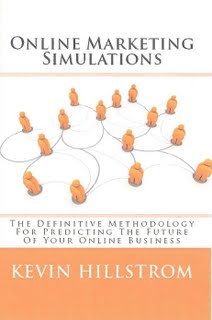

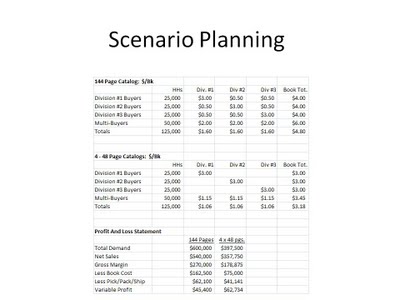
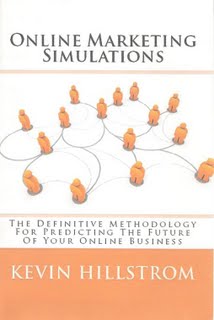
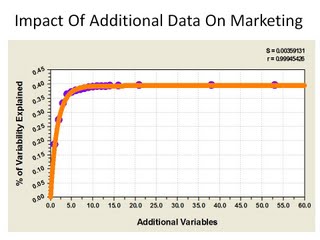
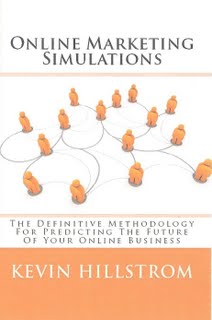

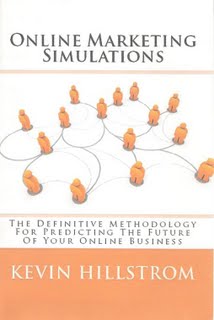
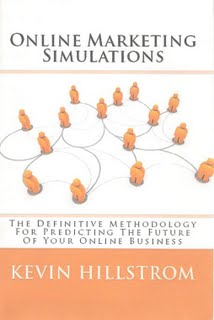 In just a few weeks, you will be among the first to have the opportunity to purchase a new book:
In just a few weeks, you will be among the first to have the opportunity to purchase a new book:

